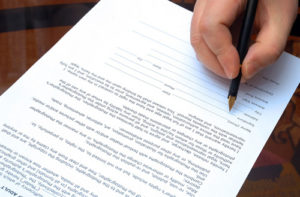Becoming an organ donor is easy. You can indicate that you want to be a donor in the following ways:
Register with your state’s donor registry.
Most states have registries. Check the list at OrganDonor.gov. In Minnesota, the registry can be found here. Once registered, you will receive a welcome packet in the mail including postcards to share with your family and friends to inform them of your generous decision to save lives through donation.
Designate your choice on your driver’s license.
Do this when you obtain or renew your license.
Sign and carry a donor card.
Cards are available from OrganDonor.gov.
Tell your family.
 Make sure your family knows your wishes regarding donation. The best way to ensure that your wishes are carried out is to put them in writing. Include your wishes in your living will or Health Care Directive, if you have one. If you have designated someone to make health care decisions for you if you become unable to do so, make sure that person knows that you want to be an organ donor. It’s also very important to tell your family that you want to be a donor. Hospitals seek consent from the next of kin before removing organs, although this is usually not required if you’re registered with your state’s donor registry. Keep in mind that you can also choose not to make a designation in writing and simply leave it to your family to decide.
Make sure your family knows your wishes regarding donation. The best way to ensure that your wishes are carried out is to put them in writing. Include your wishes in your living will or Health Care Directive, if you have one. If you have designated someone to make health care decisions for you if you become unable to do so, make sure that person knows that you want to be an organ donor. It’s also very important to tell your family that you want to be a donor. Hospitals seek consent from the next of kin before removing organs, although this is usually not required if you’re registered with your state’s donor registry. Keep in mind that you can also choose not to make a designation in writing and simply leave it to your family to decide.
Consider becoming a living donor.
Organs that can be donated by living donors include a kidney, lobe of a lung, or a portion of the liver, pancreas or intestine. You can find more information online at Be the Match.
If you are interested in making sure your family knows your wishes, consult an attorney regarding a living will or Health Care Directive. If you are a Minnesota resident, you can complete a health care directive for free here.
